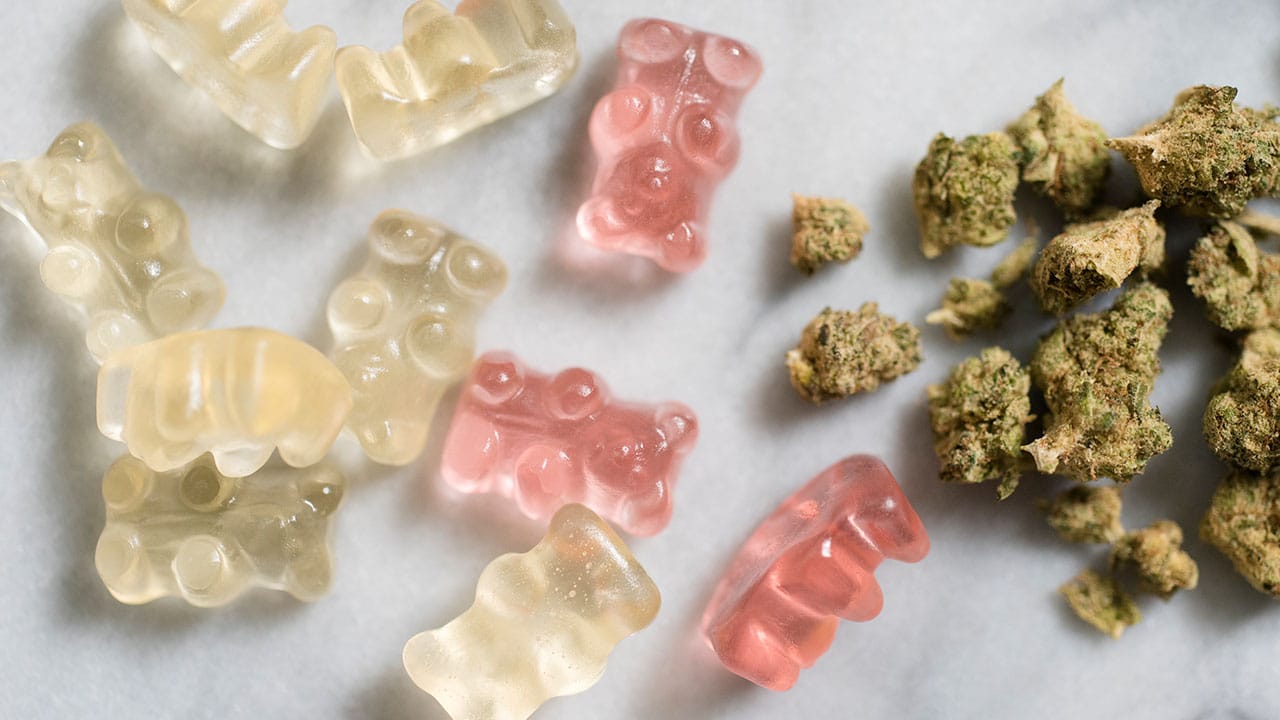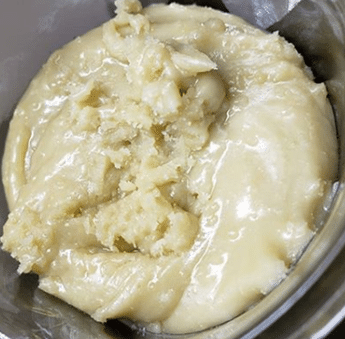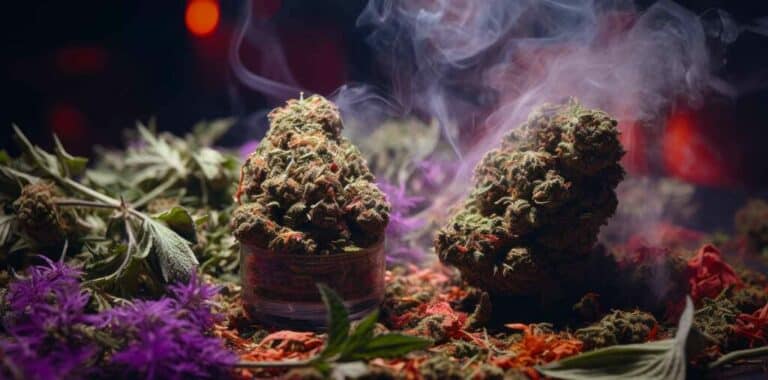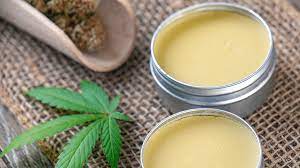Edibles vs Smoking: Which is Better (for You)?

Posted on July 20th, 2023 to Education by morgan engle
Many different factors help decide the edibles vs smoking cannabis debate for each person, including what kind of experience you want to have with your cannabis. Different terpene profiles, strains, and cannabinoid ratios all affect your experience, including how stoned you feel and how long your high lasts.
After potency, the method of consumption affects your cannabis experience the most. How you consume cannabis, for example, by eating cannabis edibles or smoking marijuana, can produce entirely different experiences.
In this post, we’ll talk about how eating cannabis edibles and smoking cannabis work in the brain and body, what the similarities and differences are, and what to expect from each. We’ll also cover how THC is metabolized and how to dose cannabis edibles correctly for the best experience.
Ready? Let’s go!
SMOKING CANNABIS
Does smoking cannabis and eating edibles do the same thing? Nope!
As you inhale cannabis active compounds called cannabinoids absorb through the lungs and into the bloodstream almost immediately breaching the blood-brain barrier. This allows the cannabinoids such as delta-9-tetrahydrocannabinol (THC), also just called delta-9-THC, to make their way to the brain rapidly.
Once the THC and other cannabinoids such as cannabidiol (CBD) hit the brain, they bind with receptors in the endocannabinoid system (ECS) most notably the CB1 receptors. This produces the “high” feeling of euphoria generally associated with cannabis.
Because inhalation allows THC to reach the brain so quickly, smoking cannabis produces short-term effects with a rapid onset time. This means that you feel the effects of smoking cannabis almost instantly, and the peak effects of smoking cannabis hit within 2 to 4 hours.
To get started smoking cannabis you only need a few things. Choose your cannabis flower, a method or tool for smoking (a water pipe, rolling papers, pipe), and a heat source. Light up and you’re smoking cannabis—One of the reasons people turn to edibles is that they’re worried about smoking and its effects—
HOW INHALED THC ENTERS THE BLOODSTREAM
When you vape or smoke cannabis, the vapor passes into the lungs, through the bronchi, and into the air sacs called alveoli where the THC penetrates into the bloodstream. The THC is absorbed rapidly by most organs and tissues once it hits the bloodstream, especially fat cells and the brain.
The rapid trip THC takes to the brain allows you to feel high almost immediately, but it also means it’s a short-term stay compared to edibles. You will find that cannabis smoke doesn’t keep you high as long.
WHAT ARE EDIBLES?
Edibles are food products made with cannabis flowers. The active ingredients of cannabis edibles are delta-9-tetrahydrocannabinol (delta-9-THC), cannabidiol (CBD), or both. They come in various forms, from gummies to mints.
Edibles are trending lately, in part as an alternative to smoking cannabis. Before getting started, it’s important to understand how different it is to consume cannabis in edible form.
Unlike when you smoke cannabis, edibles are processed through the digestive tract and liver. This means it takes significantly longer for the THC to get absorbed into the bloodstream and hit the brain. However, once it does, the beneficial effects of cannabis last longer.
Most dispensaries have a great selection of edibles these days, and there are many different forms: baked goods like brownies and cookies, gummies and hard candies, drinks like teas and sodas, chocolate bars, tinctures, and more. You’ll find edibles with different CBD to THC ratios and in different dosages.
There are even artisanal edible marijuana makers that create edibles with whole-plant cannabis extracts. This means they also contain other beneficial phytochemicals from the cannabis plant such as cannabidiol (CBD), terpenes, and flavonoids.
HOW STRONG ARE EDIBLES?
Edibles move through the digestive tract where they are absorbed in the stomach and metabolized in the liver. The liver converts THC into 11-hydroxy-THC, a more potent and longer-lasting compound compared to delta-9-THC. This is why edibles are stronger, more potent, and longer-lasting than inhaled cannabis.
ARE EDIBLES HEALTHIER THAN SMOKING?
Particularly for some medical marijuana patients with lung or respiratory issues, eating edibles are healthier than smoking or vaping because there is no impact on the lungs.
WHAT ARE THE CONS OF EDIBLES?
For cannabis smokers, one perceived downside to edibles is missing the smoking experience. Another is the need to wait so long to feel the effects. Plus, edibles can be loaded with calories, sugar, and fats.
HOW THC EDIBLES ARE METABOLIZED
The high from ingesting edibles takes longer to take effect than inhaling THC. THC from edible cannabis travels through the digestive tract to the liver where it is metabolized and converted to the potent 11-Hydroxy-THC. It takes between 45 minutes and three hours to get through the digestive tract.
HOW LONG DOES THE HIGH LAST BETWEEN SMOKING/EATING Cannabis?
11-hydroxy-THC is much more sedative, reactive, and long-lasting, up to 8-12 hours. This is why you are likely to feel the effects of edibles far longer than from smoking cannabis.
HOW MUCH THC DO YOU GET VIA SMOKING/EATING Cannabis?
The conversion process in the liver results in a stronger form of THC, so the edible high is far more intense. This is why patience is important while consuming edibles. Give the initial amount of THC a chance to work before doubling up.
HOW TO DOSE EDIBLES CORRECTLY
There are a few factors in how to dose cannabis edibles correctly, and they all relate back to how the body metabolizes THC. When you eat it, the liver processes THC before delivering it to the bloodstream and brain. This means your edibles experience has several important variables:
- The way the liver metabolizes substances like cannabis
- Consuming fats or other food with THC
- Tolerance to THC
There is no standard recommended dose of THC since there are individual differences in these factors. Although some medications are dosed based on body weight, this is not the case with edibles.
Researchers use 5 mg as the “standard” THC dose. However, experts recommend 2.5 mg to start with. In most regulated cannabis markets 5 mg is the legal “standard” edible serving size, but it may be too much for first-time users, women, or people who are sensitive to cannabis side effects.
Some practitioners recommend a cannabis microdosing process. You first abstain for at least 48 hours to avoid tolerance build-up. Then consume just 1mg of THC at a time and inch up incrementally. For most users, 1-2.5 mg is a micro-dose.
The 2.5-5mg “standard” dose range is good for most. Higher doses like 15mg-30mg are for those who use edibles often and doses greater than 50mg are for medical marijuana patients or people experienced with THC.
Edible effects last 6 to 12 hours, depending on many factors, including:
- Lifestyle
- Genetic makeup
- Diet
- When you ate food versus when you ate the edible
CONCLUSIONS
There are lots of ways to get your cannabis. Whether you’re a first-time user or a more experienced stoner, different consumption methods, like smoking or eating edibles, have their benefits. Take time and enjoy the healing powers of cannabis.
Copyright © 2024 Southern Sky Brands |
Site by CannaPlanners




